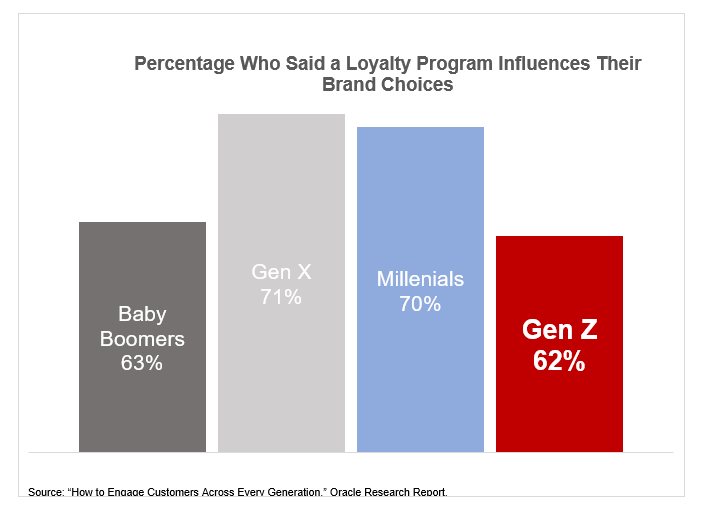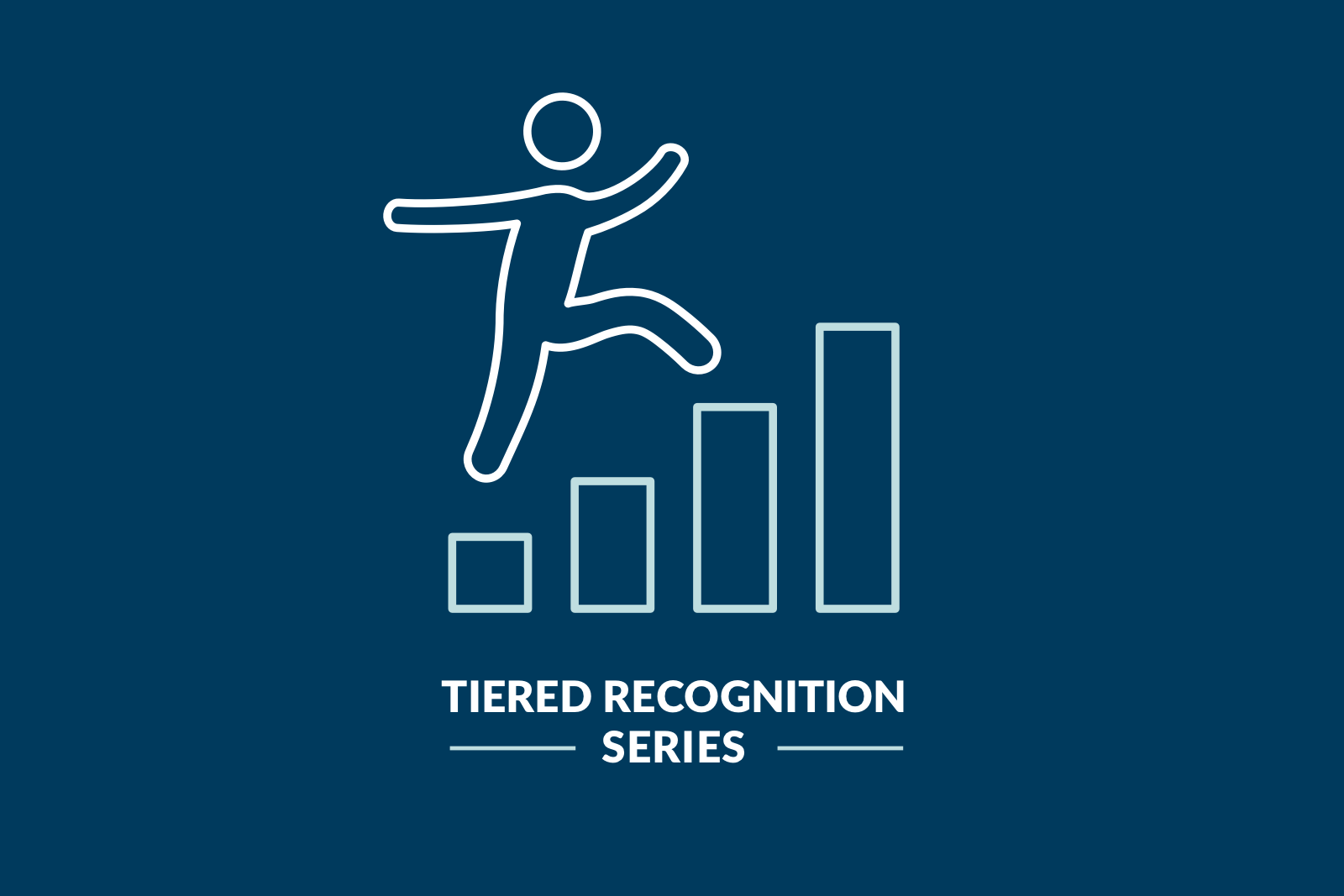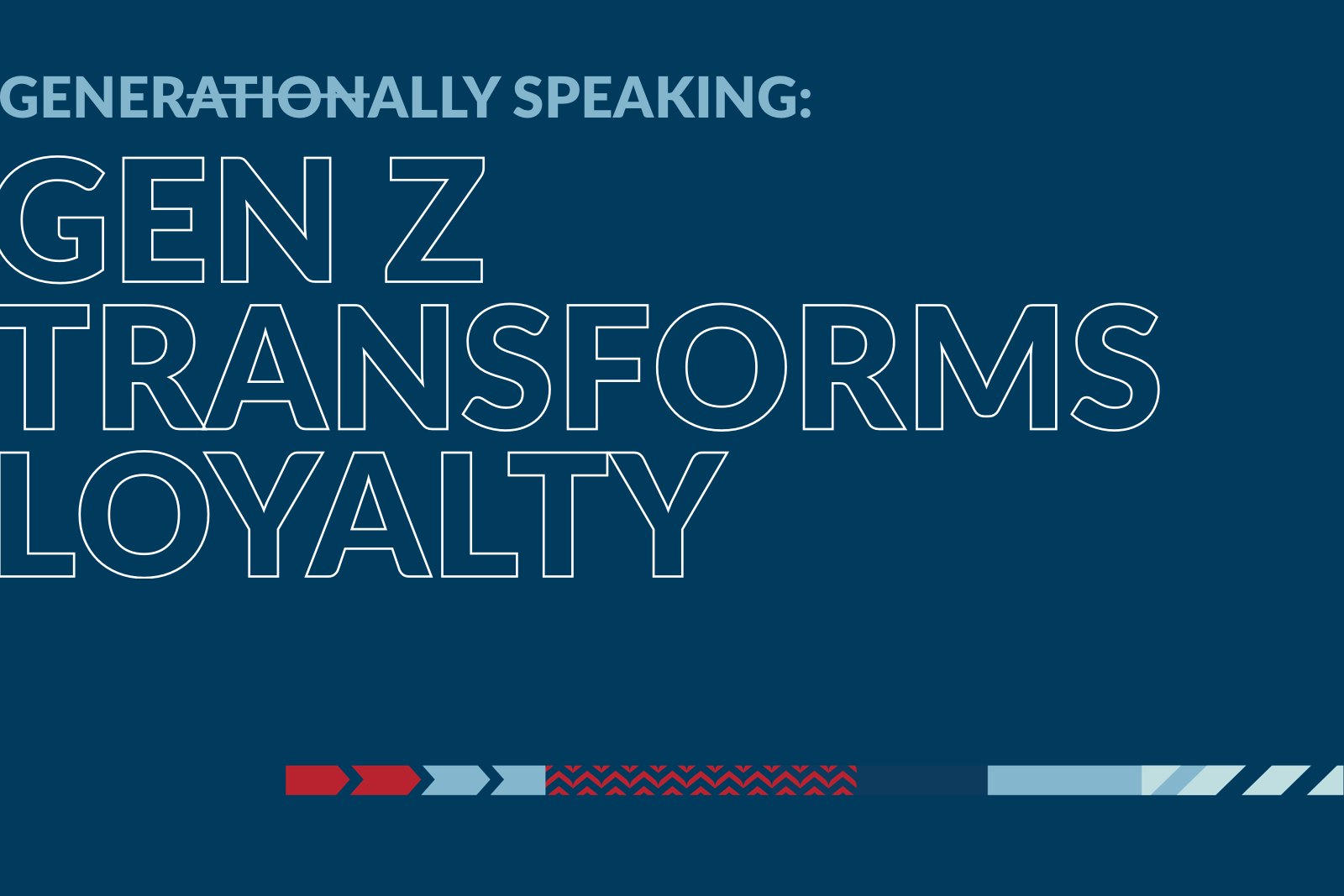Five Gen Z Marketing Insights, Direct from Our Savvy Interns

Young people today differ dramatically from the young people of even a few years ago in multiple ways: They’re diverse—and they’re comfortable with diversity. They’re “digital natives”—in other words, they’ve never known a life without smartphones, tablets, and laptops. They’re pragmatic and financially minded—you might even call them shrewd. They’re more attuned to mental health. And, overall, they’re politically progressive.1
For all these reasons and more, savvy brands are adjusting their advertising, their messaging, and their loyalty strategies to meet the wants and desires of Gen Z. And they should: This group isn’t motivated by many of the things that spark the brand allegiance of older generations. And 68 million people, ages 9 to 24, belong to Gen Z. 2
It’s understandable that a generational divide exists in behaviors and opinions about loyalty programs. A 2020 report on engaging with every generation showed Gen Z is significantly less engaged with loyalty programs. 3 In fact, 41% of Gen Z members belong to zero programs, up from 32% the previous year (2019 vs. 2018). Additionally, Gen Z offered the lowest response on whether loyalty programs influence their brand choices, especially in comparison to Millennials and Gen X.

 Nevertheless, while these negative trends in loyalty program effectiveness among members of Gen Z are significant, we’re confident they can be reversed. However, doing so will require brands to change how they structure their programs, how they engage with Gen Z consumers, how they communicate with them, and more.
Nevertheless, while these negative trends in loyalty program effectiveness among members of Gen Z are significant, we’re confident they can be reversed. However, doing so will require brands to change how they structure their programs, how they engage with Gen Z consumers, how they communicate with them, and more.
To better understand all this, The Lacek Group invited our interns—a talented, insightful bunch of Gen Zers—to share their wisdom and to add context and background to the statistics we gathered. By the end of these conversations, we came away with five insights that help us, and perhaps will help you, better understand how brands might address and reverse these negative trends when developing Gen Z loyalty initiatives.
1. Gen Z uses loyalty programs more selectively than previous generations
While our college-age interns belong to few loyalty programs, they did report participating in loyalty programs at grocery stores and coffeehouses. Grocery programs, like that of Whole Foods, can be appealing, they said, because of coupons and discount prices—important while they try to eat healthfully and save money. And belonging to coffeehouse loyalty programs, like those of Starbucks and Caribou Coffee, is a no-brainer, they shared. Even for students who don’t drink coffee, a coffeehouse is a great place to meet friends, study, and snack.
Our interns added that they belong to or use their parents’ accounts at brands like Sephora, DSW, Nordstrom, Gap, and the aforementioned Whole Foods. Despite using parents’ accounts, they reported being conscious of not spending too much, noting that they’re responsible for paying their bills and were aware that their parents earned the loyalty awards. It’s likely that when they transition off parental accounts, they’ll carefully consider programs before joining, especially considering their conservative financial practices.
2. Gen Z is more cost conscious than previous generations
Gen Zers know how to stretch a dollar—and they don’t like being nudged to spend more, say our interns. In fact, they reported that their overall lower participation in loyalty programs is due in part to their common belief that programs are designed to make them spend more money. And that goes against their habits. One intern shared: “My parents say it’s a 10% discount, but to me it’s a ploy to spend more money.”
As for subscription programs, our Gen Z interns said they’d consider joining one if it’s useful and affordable. But they’ll wait for discount codes and offers before starting. Meal box subscriptions are among those that are compelling, they say, because they provide convenience and are affordable when divvied up among roommates. Other subscriptions were reported to be “quite wasteful unless you stay on top of the timing of shipments.”
What does motivate them to reach for their wallets? Getting something cool at a great price while taking actions that help the environment. That’s why so many Gen Zers love “thrifting,” spending time perusing consignment shops, both online and in-store, plus estate, yard, and garage sales. One favorite retailer among our interns is thredUP, a secondhand online clothing store with a customer-friendly app and website.
One intern also reported that she likes brands that offer exclusivity, like having a sale once or twice a year—“not the ones that have a sale every day.” And she says the brands she doesn’t like can’t sway her—even with a generous discount.
3. Gen Z supports brands that are socially responsible
Under the umbrella of social responsibility, our interns said that brands wanting their dollars should promote sustainability, implement conservation, help those who are less fortunate, and more. All our interns expressed their preference for brands that not only take a stance on social issues, but then follow up with concrete actions. In other words, a brand must genuinely care about such things, not just give lip service. Here are more of their insights:
-
Gen Z leans local—they seek out what’s available nearby versus purchasing something that must be shipped from around the world.
-
Gen Z likes brands that care about sustainability—like Reformation, a women’s clothing brand that touts such efforts and sends members a year-end sustainability report.
-
Gen Z is mostly made up of thoughtful consumers who care about brand practices, ethics, and more. “Usually I research before I buy anything,” says one intern.
-
Gen Z rarely shops with mega companies like Amazon or Walmart; they don’t view them as socially responsible. “How can they deliver in a day without overworking people?” said one intern. Another offered, “I prefer to buy something in person versus [via] Amazon.”
-
Gen Z wants programs to reward members for taking positive actions to help solve current issues. For example, DSW rewards members with points when they donate a usable pair of shoes. Other examples include earning rewards for consistently bringing your own cup to your favorite coffeehouse or for bringing your own shopping bag to reduce waste.
4. Gen Z shops digitally
Gen Z was raised with digital technology, so it’s no surprise that when they do hand over their hard-earned and thoughtfully spent cash, they like to do so via technology:
-
Gen Z overwhelmingly prefers in-app messages over other channels, say our interns, because they’re easy to use and provide more control of what messaging they see.
-
Gen Z doesn’t want brands to send them emails. With so many email accounts—school, work, and personal—it’s “hard to stay on top of all the different in-boxes.”
-
Gen Z does like the “accessibility” benefits of technology, e.g., making the purchase experience easier by preloading information available in a loyalty program profile.
-
Gen Z likes not only the convenience of online shopping but not having to speak to a salesperson. They mention experiencing “ordering anxiety.”
-
Gen Z often relies on ratings and reviews to make decisions on purchases, although they rarely provide them. “The only time I give an in-depth review,” said one intern, “is when reviewing a professor, because they’re giving six months of their life to teach you.”
5. Gen Z values privacy
Finally, although Gen Z has grown up in a digital age, they care about privacy. Some interns noted that they often feel pressure by brands to provide emails and phone numbers. Rather than share their own, some admitted to sometimes providing their parents’ emails or phone numbers. (We didn’t hear how their parents feel about this.) In addition:
-
Gen Z will sometimes share information, actively or passively, to receive meaningful and personalized discounts and benefits—provided there are privacy boundaries.
-
Gen Z feels OK about sharing birth dates to receive a discount or a free product (e.g., a beverage at Starbucks).
-
Gen Z appreciates brands like Spotify and Netflix that use member-provided data plus member preferences to develop and deliver personalized and appealing services.
-
Gen Z doesn’t like brands like Facebook and Instagram, which, our interns said, push the limits of privacy and don’t provide any value in return. Moreover, they believe Meta, the Big Tech parent company of Facebook, Instagram, and others, “unethically” obtains information, such as listening via their mobile apps, and that its platforms offer nothing more than targeted ads for obtaining that information.
Assuming attitudes and beliefs don’t change drastically as they transition to adulthood, then it’s imperative for brands to develop new loyalty strategies to address the higher cost consciousness of this generation and their beliefs in increased and collective social responsibility. Brands must also consider the increased diversity of this generation, their predilection for efficient technology, and their appreciation for privacy. In short, loyalty must evolve to meet Gen Z.
Francesco Favazza is vice president of Strategic Services for The Lacek Group, a Minneapolis-based, data-driven, loyalty, experience and customer engagement agency that has been delivering personalization for its world-class clients for more than 30 years. The Lacek Group is an Ogilvy company.
_________________________________________________________________________________
“What Are the Core Characteristics of Generation Z?” Annie E. Casey Foundation, January 12, 2021. https://www.aecf.org/blog/what-are-the-core-characteristics-of-generation-z.
Dan Levin, “Generation Z: Who They Are, in Their Own Words,” New York Times, March 28, 2019. https://www.nytimes.com/2019/03/28/us/gen-z-in-their-words.html.
“How to Engage Customers Across Every Generation,” Oracle Research Report, April 2020.https://www.oracle.com/a/ocom/docs/dc/how-to-engage-consumers-across-every-generation.pdf

